In todays world everybody wants to be healthy and keep on moving in their life journey and pursuing every new dreams by engaging in meaningful occupations. But sometimes in this journey people might face unexpected trauma, stress, loss of social participation due to many reasons like any physical injury, accidents, mental disorder, chronic diseases etc. To overcome this patients want early recovery and independence in their daily living.
To recover from any bad health condition there should always be an efficient and effective interdisciplinary team approach. It involves simultaneous working of various professionals like Physicians, Surgeons, Nurses, Physiotherapist, Occupational therapists, Speech therapist, Prosthetist, social-workers and other hospital staff. In todays article we will be learning about the role of 'Occupational therapist' (OT) in healthcare rehabilitation.
The American Occupational Therapy Association (AOTA) defines an occupational
therapist as someone who “helps people across their lifespan participate in the
things they want and need to do through the therapeutic use of everyday
activities (occupations). OR
OT is
a client- centered health profession concerned with promoting health and well
being through meaningful occupation. Occupational therapist works to bring the patient from dependent to independent living.
Goals of OT
intervention:
To promote, maintain and restore functional independence in daily living skills and improve patients quality of life.
Therapeutic objectives are to diminish and control pathology, to restore functional capacity, to facilitate learning of skills and functions essential for adaptation to the environment.
OT REHABILITATION IN VARIOUS
CONDITIONS
In Neurological conditions :
Stroke (infarct or haemorrhage), traumatic brain injury, degenerative diseases
of CNS or PNS, Hypo- and Hyper- Kinetic movement disorders, Myasthenia gravis,
Brain or spinal cord tumour, cerebellar ataxia, Dementia, Meningitis etc.
In Paediatric conditions :
Cerebral palsy, Autism, Down’s syndrome, Seizure disorder, ADHD, Muscular
dystrophy, Intellectual disabled child (MR), Learning disabled,
Meningomyelocele, NICU early intervention for Preterm infant etc.
In Orthopaedic conditions :
Vertebral fracture causing Spinal cord injury, RA ,OA, Ankylosing spondylitis,
upper-limb or lower-limb fracture, Shoulder dislocation, Rotator-cuff tear,
Joint Replacement rehab, nerve or tendon injuries or disease, low back ache,
Burn or post-burn contracture, PIVD, Cervical spondylosis etc.
In Cardiovascular and Respiratory
conditions:
Pre- and post- surgery coronary artery disease, Covid-19 pulmonary tuberculosis,
bronchial asthma, COPD etc.
In Mental Health conditions :
Schizophrenia, Bipolar-mood disorder, PTSD, Conversion disorder, Substance and
alcohol use disorder, OCD etc.
ROLE OF OT IN 3 STAGES OF INJURY OR DISEASE PREVENTION :
Stage of disease prevention
| Evidence based OT Intervention
|
1) Primary prevention (preventing occurrence of disease)
| - Behavioural
strategies includes lifestyle modification,
stress management, smoking cessation, regular physical activity,
nutrition optimization, weight management etc.
- Injury
prevention includes fall prevention in elderly, ergonomic redesign of workplace
and home, healthy exercise program, community based injury prevention, low back
care and education program etc
|
2) Secondary prevention (Acute and subacute care) in hospital
settings and home.
| - To
improve and maintain daily functional performance through therapeutic exercises
like flexibility training, strengthening exercises, cognitive rehab,
task-specific training, balance training, vestibular training, fabrication of splints or adaptive equipment ( for use in ADL), early intervention (for
paediatric population and preterm neonates), mobility and gait training, virtual- reality plus
cognitive retraining through use of robotics etc
- Home
and environment modification for patient through family education and training,
recreational activities
- Pre-prosthetic
and prosthetic training, prescription of mobility aids like wheelchair, canes
and crutches, walker.
|
|
3)
Tertiary prevention (chronic
care) : goal is to prevent complication and minimize the effect of condition
and promote social opportunity.
| - Rehabilitation
services for mentioned conditioned.
- Removal
of architectural and attitudinal barrier to increase social participation. Creating disability friendly environment.
- Continued
OT Intervention mentioned in secondary prevention
- Pre-
vocational and Vocational rehab.
- Provision
and calculation of disability percentage according to revised Government of
India Disability gazette for locomotor disability.
- Hospice
care or palliative care.
|
OT's work in full-time, part-time basis positions in a variety of settings including :
Why there is a need of Occupational therapy and Physiotherapy rehabilitation in
hospital in India?
As
per the report, published in august 2014 by Press Information Bureau Government
of India : Ministry of Health and Family Welfare under rehabilitation group for
professionals working under Physiotherapy and Occupational therapy mentions the
supply demand gap of rehabilitation group in India as follows :
Allied health workforce category | Demands | Supply | Unadjusted Gap |
Rehabilitation / other related
|
18,62,584
|
40,265
| 18,22,319 |
As
per literature review, published on April 2015 by N.Mearns
titled “Physiotherapy (PT) and Occupational Therapy (OT) in the Acute Medical
Unit (AMU) : Guidelines for Practice”
details the role of OT and PT in AMU as follows :
Facilitating early discharge, goal-setting and intervention at start of hospital journey.
Reducing the length of stay of
patients who do not require an OPD stay,
particularly where community support can assist in achieving this goal.
Promoting a holistic, team-based
with patient-focused outcomes so that care and support to patient is delivered
faster and closer to home where appropriate.
Promoting partnership working
between health and social care to ensure best value is achieved by shifting the
balance of care to community services.
fig 1 : Activities of daily living (ADL) training
fig 2 : Therapeutic exercises and adaptions in daily living
fig 3 : Mobility training and gait training
fig 4 : Social interaction skill or group play training
fig 5 : Sensory Integration therapy and gross-motor development rehab
fig 6 : Cognitive training
fig 7a : Environment modification to create disability-friendly workplace
fig 7b : Environment modification to create disability-friendly workplace
fig 8 : Hemiplegia exercise (balance training, postural control training, weight-bearing exercises)
fig 10a : Adaptations to increase independence
fig 10b : Adaptations to protect joints and improve energy conservation
Thankyou for reading!!!
( Dr.Ashwini Sangar, Dr. Sheetal Tatar-Dhande, Dr. Pallavi Khadse-Kolhe)





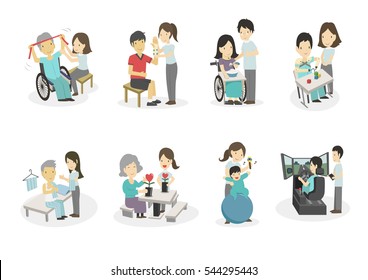
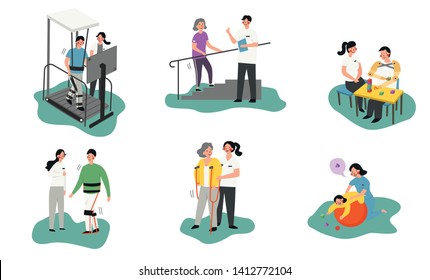
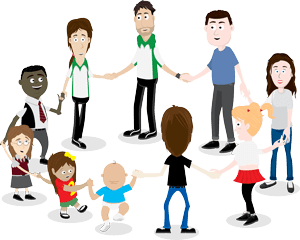

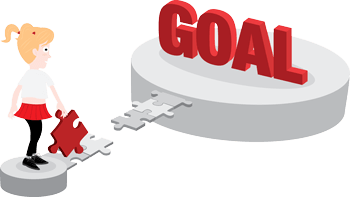
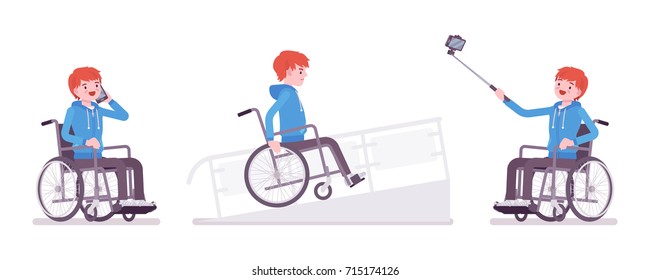




Comments
occupational health therapist Camden New south wales